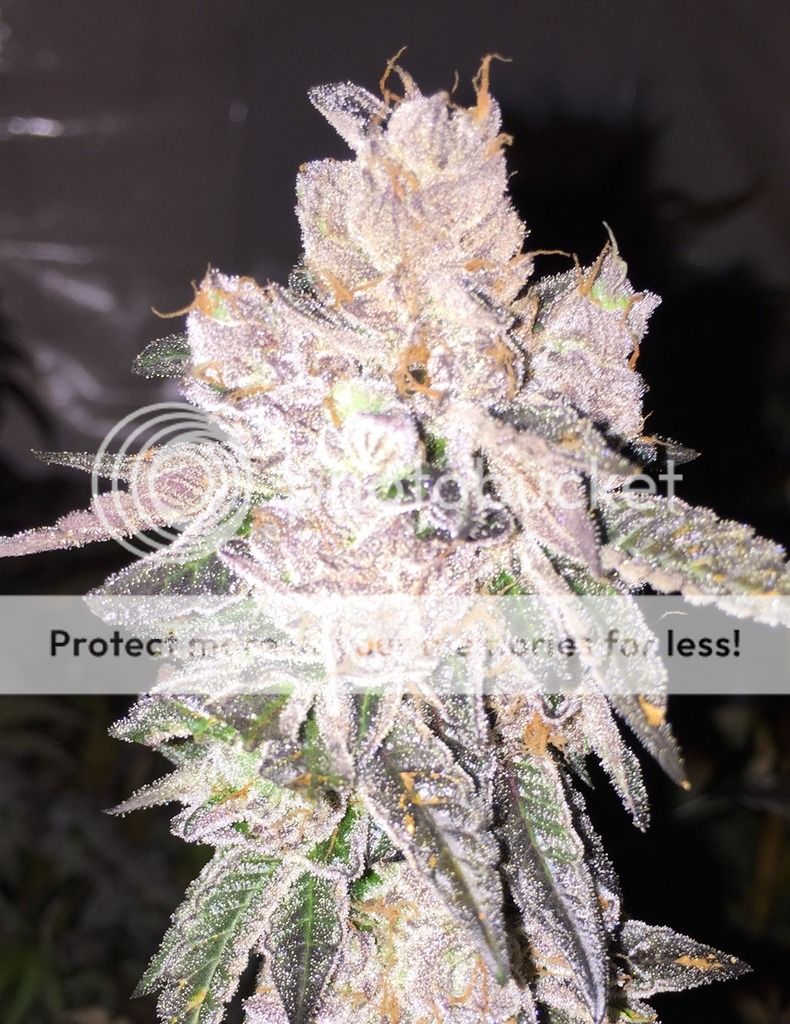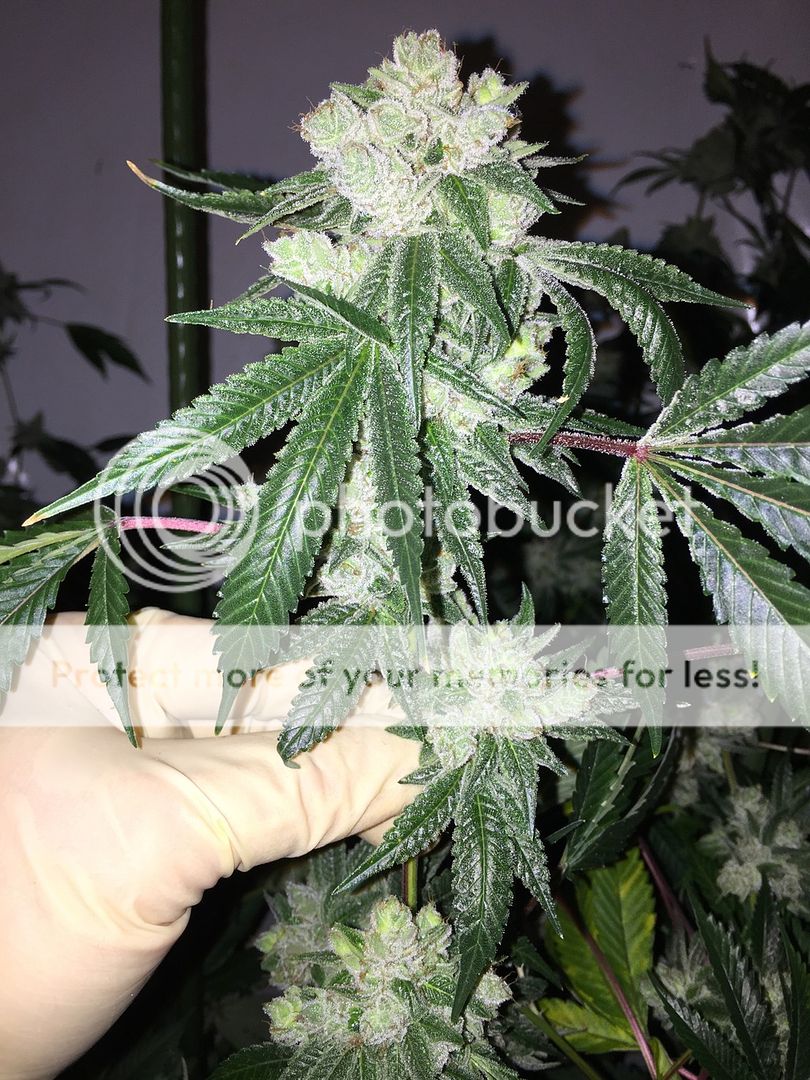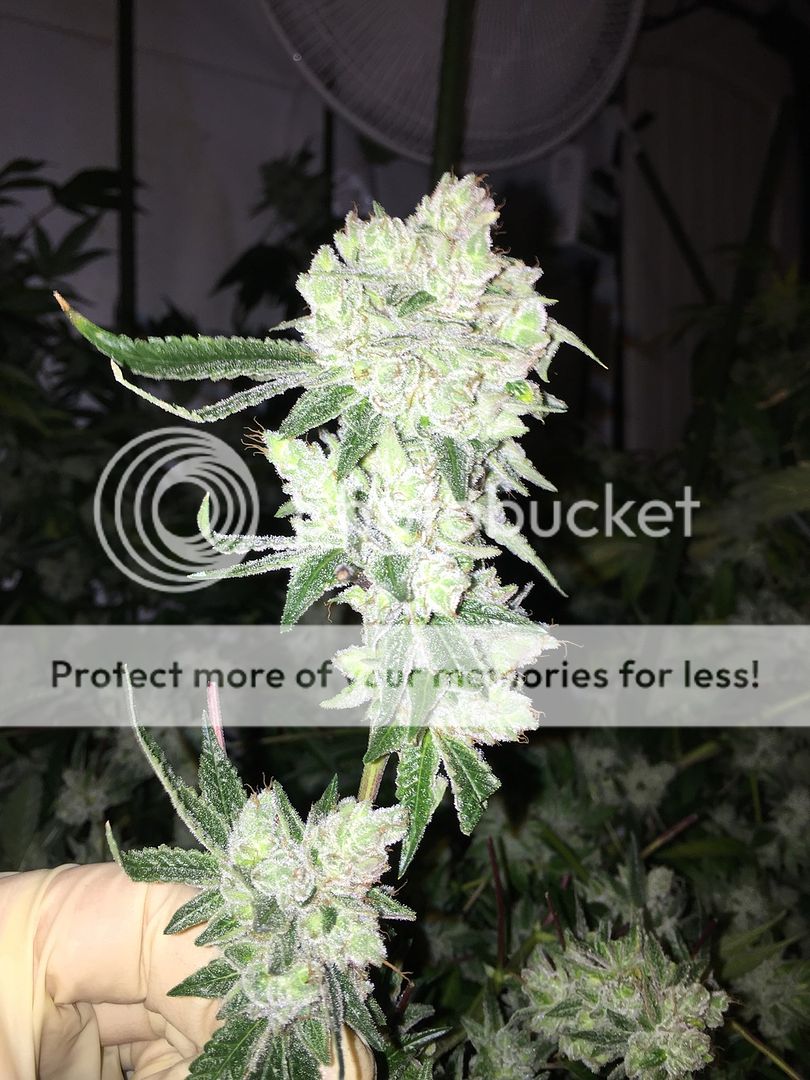@RM3 I didn't miss that bit and I don't doubt that you've dialed in your setup to run at, or close to,
it's best. With higher temps, the plants will sweat more, this forces them to drink more, which assists in keeping the roots healthier. However, the constant sweating/loss of water is what prevents the buds from developing the bulbous calyxes. The "sweating"/heat also decreases terpene development. This might explain why your garden doesn't "stink". If you cooled your room via AC, the AC would pull water from the room (condenser), maintaining a similar level of soil moisture, but your plant would not be drawing up that water and "sweating". That alone would completely change your "feed" and watering schedule.
To illustrate the drastic difference that temperature makes, here is my GSC, grown in higher temps. Notice the lack of bulbous calyxes, the amount of leaves (in bud), the hairs, the color (which is determined by terpenes, as is scent and flavors).
Here is that exact same strain (my GSC, all from a single original clone), only grown in cooler temps. No other change was made, same medium, same feed schedule, same room. Look at the change in bud structure. Bulbous calyxes, very low leaf count, very few hairs, all purple (increased terpenes). I will also say that the nose is far stronger/complex, flavors are better as well as more complex, and the smoke is more potent, the high more complex and longer in duration. This is the healthier/happier plant and sets the bar that every run with this strain will be measured against. As long as I can maintain those temps, she will come out identical each time, everything else is in perfect order.
Here is some glue from that same run.
You can grow herb in higher temps, I've churned out fire from 88F, but that doesn't mean that it was grown in optimal conditions, or was as good as it could have been. Again, cooler temps, CO2 supplementation, roots, watering, nutrients, etc. at "perfect" levels allow for a greater light saturation threshold, which increases metabolism, resulting in boosted rates of photosynthesis. Higher temps lower the light saturation threshold and slows/stops the metabolism, which decreases/stops photosynthesis.













